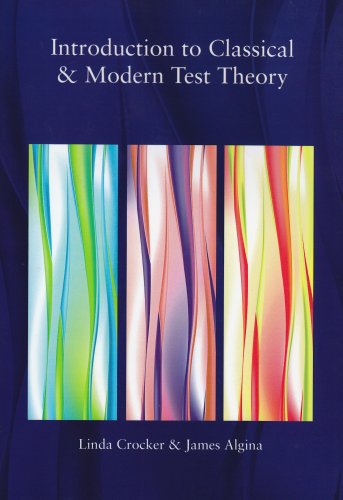Introduction to Classical and Modern Test Theory ebook
Par larson elizabeth le vendredi, mai 27 2016, 08:07 - Lien permanent
Introduction to Classical and Modern Test Theory. Linda Crocker, James Algina

Introduction.to.Classical.and.Modern.Test.Theory.pdf
ISBN: 0495395919,9780495395911 | 527 pages | 14 Mb

Introduction to Classical and Modern Test Theory Linda Crocker, James Algina
Publisher: Wadsworth Pub Co
For five days and provided at least 3 full days of complete data. Belmont, CA: Wadsworth/Thomson Learning. Introduction to classical and modern test theory. The new scales were analyzed using Classical Test Theory (CTT) and IRM; a reduced set of items was produced with IRM and correlated with accelerometer counts per minute and minutes of sedentary, light and moderate to vigorous activity per day after school. Orlando, FL: Harcourt Brace Jovanovich. Kline, A Handbook of Test Construction: Introduction to psychometric design (London: Methuen, 1986) p. Algina, Introduction to Classical and Modern Test Theory (New York, NY: Holt, 1986) p. Computerized adaptive testing; computer on wheels; classic test theory; IRT; item response theory; nonadaptive testing. Introduction to Classical Modern Test Theory. The 1991 revision of the Wechsler Intelligence Scale for Children (WISC-III) resulted in the addition of an optional subtest - Symbol Search. New York: Rinehart & Winston; 1986. Young children's understandings of cigarette smoking. Theory of generalizability: A liberalization of reliability theory. [CrossRef]; Crocker L Algina J. Crocker L, Algina R: Introduction to classical and modern test theory.